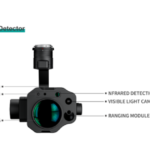The way fleet managers and commercial drivers oversee and monitor Hours of Service (HOS) compliance has been completely transformed by Electronic Logging Devices (ELDs). These gadgets offer real-time data insights that improve operational effectiveness and regulatory compliance in addition to automating the recording of driving hours. The usability of ELDs is a crucial factor that defines how successful they are. To make ELD devices user-friendly and straightforward for both fleet management and drivers, this paper examines four key aspects.
Intuitive Interface and Navigation
A basic characteristic of ELD devices that contributes to their user-friendliness is their straightforward interface and simple navigation. Modern ELDs include user interfaces (UI) that are easy to use and navigate, making it simple for drivers to access and perform basic tasks, including observing driving hours, logging duty status, and accessing records for inspection. Drivers don’t need a lot of training to operate the gadget effectively, thanks to clear menus, prompts, and icons. With intuitive navigation, drivers can focus on safe driving techniques and easily adhere to Hours of Service (HOS) requirements since it lowers the probability of errors and enhances the entire user experience. Additionally, its user-friendly design increases driver satisfaction and lowers the learning curve that comes with implementing new technologies in fleets.
Automated Logging and Reporting
The tracking and reporting of HOS data is automated by ELD devices, which removes the need for human record-keeping and eases the administrative load on drivers and fleet management. Automated logging ensures accurate compliance records by recording driving hours, rest breaks, and changes in duty status in real-time. Automated notifications and reminders for approaching speed limits and mandatory breaks are a feature of user-friendly ELDs, which make it easy for drivers to be aware and comply with laws. Furthermore, automatic reporting features streamline compliance processes, reduce possible fines or penalties, and make it easier to generate reports for roadside inspections and audits. This automatic feature ensures that fleets maintain regulatory compliance without the headache of human data entry while also saving time and improving reporting accuracy.
Compatibility and Integration
ELDs that are easy to use provide smooth interoperability and interaction with current fleet management software and systems. By being compatible, ELDs may interact with other onboard systems, including maintenance management systems, dispatch software, and GPS tracking in an efficient manner. Centralized tracking of fleet operations and performance indicators is made possible by integrated data sharing between ELDs and fleet management systems. Fleet managers benefit from this integration’s improved data quality and dependability, as well as its thorough insights into driver behavior, vehicle usage, and operational effectiveness. Easy-to-use ELDs make integration procedures go more smoothly, allowing fleets to make better use of current technology to increase efficiency and make better decisions. ELD devices maintain system interoperability, which helps create a unified operating environment where data moves easily between platforms, facilitating well-informed decision-making and fleet optimization.
Customer Support and Training
Extensive customer support and training resources are another essential component that improves the use of ELD devices. ELD suppliers give fleet managers and drivers with information on how to troubleshoot, comply with regulations, and utilize their devices. They also offer user manuals, training courses, and online tools. Teams of attentive customer service representatives are on hand to answer questions, offer technical help, and quickly fix problems. Sufficient training and assistance enable users to optimize the advantages of ELD technology, enhance operational processes, and guarantee seamless implementation throughout the enterprise. ELD suppliers boost user confidence and happiness by funding extensive customer support and training programs, which promotes long-term success and compliance in the fleet sector. Users are guaranteed to be able to explore the features with ease thanks to readily available training materials and attentive support services.
Conclusion
To sum up, ELD devices are essential to contemporary fleet management since they automate HOS compliance and offer real-time data insights. ELD devices are made more user-friendly by their clear interfaces, automatic reporting and logging, interoperability with other systems, and extensive customer support. These features make it easier for fleet managers and drivers to comply with regulations, increase operational effectiveness, and traverse them. User-friendly ELD devices will continue to be crucial instruments for improving safety, efficiency, and regulatory compliance in the commercial transportation sector as long as technology continues to advance.







